The Pittsburgh Post-Gazette reports that Dylan Vitone, Pittsburgh's 2009 Emerging Artist of the Year, will show his "Miami Project" at DNJ in September 2010.
http://www.post-gazette.com/pg/09361/1023472-437.stm
Sunday, December 27, 2009
Laura Parker
See Laura Parker's "Pot Bottoms and Naked Eye Objects" reviewed on Lenscratch
http://lenscratch.blogspot.com/2009/12/laura-parker.html
http://lenscratch.blogspot.com/2009/12/laura-parker.html
Thursday, December 17, 2009
Suzy Poling Image Featured in Harper's Magazine!
Suzy Poling's Ferris Wheel image will be featured in the January 2010 issue of Harper's Magazine, so be sure to check it out!
Suzy will be showing at DNJ Gallery from May 8 - July 10, 2010.

Suzy will be showing at DNJ Gallery from May 8 - July 10, 2010.

Tuesday, December 15, 2009
Richard Gilles Review
DNJ Gallery artist, Richard Gilles, and his show titled, Signs of the Times, was recently featured on SQUARE CYLINDER.com. Richard will be showing this body of work here at DNJ starting January 23 - March 6, 2010, so make sure to stop by for a visit!

Richard Gilles, Peckman 3040s, digital inkjet print, 21" x 57"

Richard Gilles, Ad America, digital inkjet print, 21" x 57"
By: David M. Roth
Posted on 13 December 2009
Wherever you find abandoned buildings, cyclone fences, razor wire, graffiti, dirt tracks, lonesome highways and homeless living in cars – that’s where you’ll find Richard Gilles: camera in hand, making panoramic pictures out of vistas that are everything but picturesque.
His latest series, Signs of the Times, on view at b. sakata garo through Jan. 2, Gilles consists of empty billboards that show what remains when advertising’s projection of desire is short-circuited by a lack of cash. At first glance, you might wonder how much juice can be squeezed from so hollow a fruit. But here, as in prior projects of this sort, Gilles reaps big harvests from a deceptively simple approach. Rather than aim for indictments or sweeping statements, he lets photography’s deadpan power – its natural adhesion to fact — do the heavy lifting. Signs doesn’t just speak about our soured
economy; its vacant billboards and desolate landscapes speak of economic and environmental hubris as well as a kind of spiritual vacuum in regions where billboards fill the 70-mile-an-hour gap between cities, suburbs, mountains and farmland. (These shots were taken in California and Nevada.)
This, of course, is not new territory. Photographers from Walker Evans and Robert Frank to Stephen Shore have wrung the pictorial equivalent of novels from signs that commented slyly, ironically or nonsensically on their surroundings. So have many of the New Topographics photographers. Gilles definitely stands on their shoulders. But his work also seems to be aligned with the sensibilities of contemporary chroniclers like Andreas Gursky and Thomas Struth, artists whose monumental banalities magnify nothingness to wall-sized dimensions. There is also a link between Gilles and the work of Bernd and Hilla Becher whose career-length obsession with industrial structures serves as a kind of template. I’d be remiss, too, if I didn’t mention Hiroshi Sugimoto’s time-lapse movie theatre pictures. Gilles’ vacant billboards really do resemble Sugimoto’s blank movie screens — even if the motivations of the two artists are worlds apart.
Gilles, unlike the purveyors of super-sized prints to which the art market, before the crash, became addicted, shows emptiness at a reduced scale; his largest pictures are 27” x 57”. They’re not small, but they’re small enough to force you to hunt for telling details. Do it and you’ll discover, in the 21 works on view here, things that push them beyond the ostensible subject of outdoor advertising’s demise.
Peckman 3040, an elevated freeway ramp flanked by two empty billboards is, from a formal standpoint, an extraordinary picture. The curve of the concrete and the shadow it casts, serve up sensuousness where you least expect it. You can marvel at it, but you can’t really savor it. The scale of the highway and the empty signs show the brutality inflicted by the auto on the landscape and how the vastness of the desert itself magnifies humanity’s insignificance in the greater scheme of things.
Perhaps the most interesting transformation highlighted by Signs is how billboards, when emptied of content, switch from being visual pollution to being blank slates on which viewers can project anything. Gilles probably didn’t intend this, but he certainly captures that potential when he photographs billboards outside cities at dusk. Pictures like Olympia 4547 show how, instead of arousing the desires of motorists, these blank screens seem to be lying in wait for passersby to engage in a little free-form culture jamming of their own – a fact underscored by the razor wire fence that guards the billboard in, another picture, Ad America. Look closely at this image and you’ll other important details, like a billboard for the 40 Deuces, a burlesque club, and a cluster of under-construction buildings that seem, in their unfinished state, to be waiting for time or circumstance to reclaim them, too.
I laughed when I saw Faddis 1100, a picture of a billboard situated on hairpin curve in a spot where no one, save the ambitious rubbernecker, can see it. The curvature of the sign, which mirrors the shape of the road, probably doesn’t exist. I suspect that when Gilles saw the ready-made joke before his lens he chose to enhance it by subtly altering the sign electronically, after the fact.
Like a comedian, Gilles recognizes that humor can say as much about a subject as a documentary treatise. Signs of the Times certainly does that.
Richard Gilles, Signs of the Times, at b. sakata garo through Jan. 2, 2010.

Richard Gilles, Peckman 3040s, digital inkjet print, 21" x 57"

Richard Gilles, Ad America, digital inkjet print, 21" x 57"
By: David M. Roth
Posted on 13 December 2009
Wherever you find abandoned buildings, cyclone fences, razor wire, graffiti, dirt tracks, lonesome highways and homeless living in cars – that’s where you’ll find Richard Gilles: camera in hand, making panoramic pictures out of vistas that are everything but picturesque.
His latest series, Signs of the Times, on view at b. sakata garo through Jan. 2, Gilles consists of empty billboards that show what remains when advertising’s projection of desire is short-circuited by a lack of cash. At first glance, you might wonder how much juice can be squeezed from so hollow a fruit. But here, as in prior projects of this sort, Gilles reaps big harvests from a deceptively simple approach. Rather than aim for indictments or sweeping statements, he lets photography’s deadpan power – its natural adhesion to fact — do the heavy lifting. Signs doesn’t just speak about our soured
economy; its vacant billboards and desolate landscapes speak of economic and environmental hubris as well as a kind of spiritual vacuum in regions where billboards fill the 70-mile-an-hour gap between cities, suburbs, mountains and farmland. (These shots were taken in California and Nevada.)
This, of course, is not new territory. Photographers from Walker Evans and Robert Frank to Stephen Shore have wrung the pictorial equivalent of novels from signs that commented slyly, ironically or nonsensically on their surroundings. So have many of the New Topographics photographers. Gilles definitely stands on their shoulders. But his work also seems to be aligned with the sensibilities of contemporary chroniclers like Andreas Gursky and Thomas Struth, artists whose monumental banalities magnify nothingness to wall-sized dimensions. There is also a link between Gilles and the work of Bernd and Hilla Becher whose career-length obsession with industrial structures serves as a kind of template. I’d be remiss, too, if I didn’t mention Hiroshi Sugimoto’s time-lapse movie theatre pictures. Gilles’ vacant billboards really do resemble Sugimoto’s blank movie screens — even if the motivations of the two artists are worlds apart.
Gilles, unlike the purveyors of super-sized prints to which the art market, before the crash, became addicted, shows emptiness at a reduced scale; his largest pictures are 27” x 57”. They’re not small, but they’re small enough to force you to hunt for telling details. Do it and you’ll discover, in the 21 works on view here, things that push them beyond the ostensible subject of outdoor advertising’s demise.
Peckman 3040, an elevated freeway ramp flanked by two empty billboards is, from a formal standpoint, an extraordinary picture. The curve of the concrete and the shadow it casts, serve up sensuousness where you least expect it. You can marvel at it, but you can’t really savor it. The scale of the highway and the empty signs show the brutality inflicted by the auto on the landscape and how the vastness of the desert itself magnifies humanity’s insignificance in the greater scheme of things.
Perhaps the most interesting transformation highlighted by Signs is how billboards, when emptied of content, switch from being visual pollution to being blank slates on which viewers can project anything. Gilles probably didn’t intend this, but he certainly captures that potential when he photographs billboards outside cities at dusk. Pictures like Olympia 4547 show how, instead of arousing the desires of motorists, these blank screens seem to be lying in wait for passersby to engage in a little free-form culture jamming of their own – a fact underscored by the razor wire fence that guards the billboard in, another picture, Ad America. Look closely at this image and you’ll other important details, like a billboard for the 40 Deuces, a burlesque club, and a cluster of under-construction buildings that seem, in their unfinished state, to be waiting for time or circumstance to reclaim them, too.
I laughed when I saw Faddis 1100, a picture of a billboard situated on hairpin curve in a spot where no one, save the ambitious rubbernecker, can see it. The curvature of the sign, which mirrors the shape of the road, probably doesn’t exist. I suspect that when Gilles saw the ready-made joke before his lens he chose to enhance it by subtly altering the sign electronically, after the fact.
Like a comedian, Gilles recognizes that humor can say as much about a subject as a documentary treatise. Signs of the Times certainly does that.
Richard Gilles, Signs of the Times, at b. sakata garo through Jan. 2, 2010.
Tuesday, December 8, 2009
Annie Seaton write-up in the Toronto Sun

Entertainment
Tuesday, December 8, 2009
By Linda Massarella, Sun Media
Dear Toronto: Canadian/Los Angeles artist Annie Seaton (she was born in Toronto but moved here at the age of 12) has been making a successful living taking photographs of California’s big skies and sunsets and selling them at various galleries. It wasn’t until she went back to Toronto last year to visit family that a kind of odd epiphany hit her: “I became overwhelmed by Toronto’s beauty and I felt overwhelmed by a compulsion to capture it.” Seaton spent days taking photos of Toronto streets and landmarks such as Honest Ed’s and the Redpath Sugar plant. “I know I’m seeing beauty where others may not. The sky in L.A. is filtered through smog. The sky in Toronto is magical; the sun is golden and Lake Ontario sparkles with the purest of blues.”
Seaton, 42, took the photos back to her studio and played with them, adding in painted swirls here and stripes of colour there. The works debuted at the DNJ Gallery in Hollywood last month. The Canadian consulate here passed the word and a load of ex-pats showed up for the opening. “At the opening, people who grew up in Toronto became very emotional. They were saying, ‘Oh, that’s near where I grew up, I forgot how beautiful it was’.” Seaton calls the exhibit, on until Jan. 14, her “love letter to Toronto.”
But she’s not done with the city yet. “These photos I took in May. I’m going back this winter for the next series.”
massarellalinda@yahoo.com
Linda Massarella, a Canadian writer in Los Angeles, writes every Sunday about notable Canadians living in L.A.
Wednesday, November 25, 2009
DNJ Gallery Holiday Editions Now Available
DNJ Gallery is pleased to present Holiday Miniature Editions - a special series of limited edition, photo-based works by eleven gallery artists. The works vary in size and edition, and range in price from $40- $100. A limited number of full-set editions are available for $500. Created to entice your inner art collector and encourage art-giving this holiday season, the miniatures provide an affordable way to build a contemporary photography collection. DNJ Miniatures are available for purchase individually or as a full set. Please contact the gallery for further information. office@dnjgallery.net
Click the Holiday Miniature link above or the artists links below to scroll through all available images.
Miniature works are available by:
Maria Luisa Morando, Annie Seaton, Jane O'Neal, Jona Frank, Richard Gilles, Darryl Curran, Laura Parker, Bernadette DiPietro, Anne Veraldi, Patrick Wymore and Dylan Vitone

Maria Luisa Morando

Annie Seaton

Jane O'Neal
See Environmental Memory: Part I - Home Grown
series for all available miniatures by Jane

Jona Frank

Richard Gilles

Darryl Curran
Images available in three colors shown

Laura Parker

Bernadette DiPietro
Call gallery for all available
miniaures by Bernadette

Anne Veraldi

Patrick Wymore

Dylan Vitone
Click the Holiday Miniature link above or the artists links below to scroll through all available images.
Miniature works are available by:
Maria Luisa Morando, Annie Seaton, Jane O'Neal, Jona Frank, Richard Gilles, Darryl Curran, Laura Parker, Bernadette DiPietro, Anne Veraldi, Patrick Wymore and Dylan Vitone

Maria Luisa Morando

Annie Seaton

Jane O'Neal
See Environmental Memory: Part I - Home Grown
series for all available miniatures by Jane

Jona Frank
Richard Gilles

Darryl Curran
Images available in three colors shown

Laura Parker

Bernadette DiPietro
Call gallery for all available
miniaures by Bernadette

Anne Veraldi

Patrick Wymore
Dylan Vitone
Tuesday, November 24, 2009
Maria Luisa Morando Featured on PIX Feed LA
DNJ Gallery artist, Maria Luisa Morando and her exhibition titled Aqua & White, are spotlighted on PIX Feed LA blog! This exhibition is running now through January 16, 2010, so be sure to stop by for a visit.
"... By overexposing the camera, my world becomes clutter free, enabling the viewer to experience the moment and therefore really see it, feel it and connect with it. Like memories, these images have the seemingly counter-intuitive qualities of being highly defined, yet at the same time, being impossible to get close to, no matter how much the viewer tries.
By removing the clutter, the viewer is freed up to respond to the work almost as if they can hear the image. Without the surplus detail, the other senses can come into play, making it easier to hear the waves, feel the heat of the sunlight and taste the salt air. The lack of clutter gives tranquility about the work. "

Maria Luisa Morando, Aqua I, digital c-print, 2009, 48 x 48 inches
"... By overexposing the camera, my world becomes clutter free, enabling the viewer to experience the moment and therefore really see it, feel it and connect with it. Like memories, these images have the seemingly counter-intuitive qualities of being highly defined, yet at the same time, being impossible to get close to, no matter how much the viewer tries.
By removing the clutter, the viewer is freed up to respond to the work almost as if they can hear the image. Without the surplus detail, the other senses can come into play, making it easier to hear the waves, feel the heat of the sunlight and taste the salt air. The lack of clutter gives tranquility about the work. "

Maria Luisa Morando, Aqua I, digital c-print, 2009, 48 x 48 inches
Saturday, November 21, 2009
Maria Luisa Morando Featured on Lenscratch
Check out this awesome Lenscratch blog about Maria Luisa's Aqua & White exhibition here at DNJ Gallery!
I remember when I first came across Maria Luisa Morando's exquisite work. It was in 2008 at Photo LA, in the photoeye Gallery booth. Her large, all white prints were framed in white and a contrast to the riot of imagery that surrounded it. The images were quiet, bleached out, as if looking at a dream, and I was completely transfixed. Whatever shapes or colors were able to emerge from the whiteness were like jewelry, tiny slivers of turquoise and rose, with washes of pale aqua and butter so faint that you had to work hard to see them. Those images stayed with me.
Several months later I invited Maria Luisa to speak in one of my classes, and she was anything but bleached out. Maria Luisa is a lively, beautiful British photographer, full of intention and intelligence. She spoke of how The White Series came out of the horror of 911 and as a reaction to these traumatic events, she wanted simplicity in her life. Now living in Los Angeles, Maria Luisa uses the coastline to find the the visual restraint and clarity that suits her vision.
Her new addition to this work, The Aqua Series, will be shown along side The White Series at an exhibition at the DNJ Gallery in Los Angeles. The show opens tonight and runs through January 16th.
Our lives are defined by moments.
Our memories are a series of moments that capture our lives and frame the emotions that surround them. The emotions are fluid, but the moments are both singular and eternal.
These timeless photographs capture a series of moments and allow the viewer to explore the emotions that ebb and flow with them. Like memories, these images have the seemingly counter-intuitive qualities of being highly defined, yet at the same time, being impossible to get close to, no matter how much the viewer tries.

Maria Luisa Morando, Aqua VI, 48" x 48," digital c-print, 2009
I remember when I first came across Maria Luisa Morando's exquisite work. It was in 2008 at Photo LA, in the photoeye Gallery booth. Her large, all white prints were framed in white and a contrast to the riot of imagery that surrounded it. The images were quiet, bleached out, as if looking at a dream, and I was completely transfixed. Whatever shapes or colors were able to emerge from the whiteness were like jewelry, tiny slivers of turquoise and rose, with washes of pale aqua and butter so faint that you had to work hard to see them. Those images stayed with me.
Several months later I invited Maria Luisa to speak in one of my classes, and she was anything but bleached out. Maria Luisa is a lively, beautiful British photographer, full of intention and intelligence. She spoke of how The White Series came out of the horror of 911 and as a reaction to these traumatic events, she wanted simplicity in her life. Now living in Los Angeles, Maria Luisa uses the coastline to find the the visual restraint and clarity that suits her vision.
Her new addition to this work, The Aqua Series, will be shown along side The White Series at an exhibition at the DNJ Gallery in Los Angeles. The show opens tonight and runs through January 16th.
Our lives are defined by moments.
Our memories are a series of moments that capture our lives and frame the emotions that surround them. The emotions are fluid, but the moments are both singular and eternal.
These timeless photographs capture a series of moments and allow the viewer to explore the emotions that ebb and flow with them. Like memories, these images have the seemingly counter-intuitive qualities of being highly defined, yet at the same time, being impossible to get close to, no matter how much the viewer tries.

Maria Luisa Morando, Aqua VI, 48" x 48," digital c-print, 2009
Tuesday, November 17, 2009
Please be sure to stop by DNJ Gallery to see Aqua & White by Maria Luisa Morando and Going Home: Toronto by Annie Seaton. The show will run through January 16, 2010.
View photos from the opening below:
View photos from the opening below:
Miracle Mile Art Walk and Artist Talk
Be sure to join us for this month's MM Art Walk hosted by DNJ Gallery this Saturday, November 21, 2009 from 4 - 7 pm! Along with refreshments, both Maria Luisa Morando and Annie Seaton will be giving artist talks at 4:30 pm, so please be sure to stop by for some fun, food, and art!

Maria Luisa Morando, Aqua V, digital c-print, 2009

Annie Seaton, Harbord St., c-print with acrylic inks, 2009

Maria Luisa Morando, Aqua V, digital c-print, 2009

Annie Seaton, Harbord St., c-print with acrylic inks, 2009
Tuesday, November 3, 2009
Maria Luisa Morando Featured in the November Issue of ArtScene
DNJ Gallery artist, Maria Luisa Morando, is a featured artist in this month's ArtScene.
This exhibition runs from November 14, 2009 - January 16, 2010 so please stop by the gallery for a visit!

Maria Luisa Morando, Aqua V, 2009
by Michael Buitrón
In theater design, it is often the barest suggestion of an image that suggests a particular time and place. A few bricks sketched on a dark wall, and the stage is transfigured into a dark and foreboding alley. In a similar way, Maria Luisa Morando’s photographs are so washed in light that only the barest traces are left to represent landscapes where sand and water interplay to form the shore. From her early years in theater and costume design, Morando brings an eye that is skilled in developing the essential, leaving details to be fleshed out in the mind of the viewer.
“Aqua and White” is a series of large-scale prints that, installed in the long and narrow exhibition space transform the room into an installation, beckoning the viewer to step into the image. With her cool gelato colors and sunlight reflected off the sand and celadon waves, she evokes fond memories of summer days. Because of the lack of sharp detail, it becomes impossible to explore the images for their specificity, and instead they open up and play to any seaside memory the viewer cares to pour into them. In “Camera Lucida” Roland Barthes referred to photographic details that create an intense, personal response, as the punctum. For images that are essentially punctum-free, Morando moves out of the way, allowing the viewer to find their own point of entry into the briny blur.
Having grown up in a small village in Great Britain that was, “as far from the sea as one could possibly get,” Morando’s childhood holidays created her first memories of the seaside as a place of retreat and contemplation. In the anxious and stressful days after September 11th she journeyed to the French coast at Biarritz, where she found both solace and her photographic muse in the shoreline. Like land and water’s eternal compromise that interplay and define the shore, these early works were titled with words from the Lord’s Prayer translated into Arabic, and the geography of the coast became a hopeful metaphor for the peaceful potential of East meeting West.
In the years since then, Morando’s seascapes have expanded the opportunity for a multitude of associations. By draining her photographs of color, the artist has allowed room for the viewer to fill her work with their own associations. For “Aqua & White” her point-of-view completely removes the horizon, offering only sand and sea, punctuated by the occasional blurry cipher that stands for a beachgoer or child at play. The square picture plane, like a Tibetan Mandala, offers the viewer a point of focus and contemplation.
This exhibition runs from November 14, 2009 - January 16, 2010 so please stop by the gallery for a visit!

Maria Luisa Morando, Aqua V, 2009
by Michael Buitrón
In theater design, it is often the barest suggestion of an image that suggests a particular time and place. A few bricks sketched on a dark wall, and the stage is transfigured into a dark and foreboding alley. In a similar way, Maria Luisa Morando’s photographs are so washed in light that only the barest traces are left to represent landscapes where sand and water interplay to form the shore. From her early years in theater and costume design, Morando brings an eye that is skilled in developing the essential, leaving details to be fleshed out in the mind of the viewer.
“Aqua and White” is a series of large-scale prints that, installed in the long and narrow exhibition space transform the room into an installation, beckoning the viewer to step into the image. With her cool gelato colors and sunlight reflected off the sand and celadon waves, she evokes fond memories of summer days. Because of the lack of sharp detail, it becomes impossible to explore the images for their specificity, and instead they open up and play to any seaside memory the viewer cares to pour into them. In “Camera Lucida” Roland Barthes referred to photographic details that create an intense, personal response, as the punctum. For images that are essentially punctum-free, Morando moves out of the way, allowing the viewer to find their own point of entry into the briny blur.
Having grown up in a small village in Great Britain that was, “as far from the sea as one could possibly get,” Morando’s childhood holidays created her first memories of the seaside as a place of retreat and contemplation. In the anxious and stressful days after September 11th she journeyed to the French coast at Biarritz, where she found both solace and her photographic muse in the shoreline. Like land and water’s eternal compromise that interplay and define the shore, these early works were titled with words from the Lord’s Prayer translated into Arabic, and the geography of the coast became a hopeful metaphor for the peaceful potential of East meeting West.
In the years since then, Morando’s seascapes have expanded the opportunity for a multitude of associations. By draining her photographs of color, the artist has allowed room for the viewer to fill her work with their own associations. For “Aqua & White” her point-of-view completely removes the horizon, offering only sand and sea, punctuated by the occasional blurry cipher that stands for a beachgoer or child at play. The square picture plane, like a Tibetan Mandala, offers the viewer a point of focus and contemplation.
Maria Luisa Morando and Annie Seaton Artist Reception
DNJ Gallery is pleased to announce the upcoming exhibition “Aqua & White” featuring the photographs of Maria Luisa Morando. Gallery II presents “Going Home: Toronto” displaying unique acrylic and photographic works by Annie Seaton.
The artist reception will be held on Saturday November 14, 2009 from 6 - 8pm, and the exhibitions will run through January 16, 2010.

Maria Luisa Morando, Aqua IV,
2009, 12 x 12 inches

Annie Seaton, Island Ferry with Two Bouys,
2009, 36 x 24 inches
The artist reception will be held on Saturday November 14, 2009 from 6 - 8pm, and the exhibitions will run through January 16, 2010.

Maria Luisa Morando, Aqua IV,
2009, 12 x 12 inches

Annie Seaton, Island Ferry with Two Bouys,
2009, 36 x 24 inches
Thursday, October 8, 2009
Jona Frank exhibition featured in this Sunday's LA Times
DNJ's current exhibition, of work by Jona Frank, is a featured exhibition in the Entertaimnent section of the Los Angeles Times. Look for the article in this Sunday's paper.
This show is running through November 7, 2009, so please stop by to see Jona's work in person!

Jona Frank, Simon 10, Santa Monica
2005, c-print, 11 x 14 inches
Jona Frank's 'Boys in Progress' at DNJ Gallery
Capturing the different stages of adolescence
By Liesl Bradner
October 11, 2009
As the youngest of four children and the only girl, Jona Frank spent a fair amount of her youth forced to sit and watch her older brothers at hockey games, piano recitals or at church as they served Mass as altar boys. And those observational skills would serve as a steppingstone to a career as a photographer.
Frank's exhibit at DNJ Gallery, "Boys in Progress" is a homage to those days watching her siblings maneuver and figure out the world. On view are 20 photos of boys ages 8 to 22 taken at different phases of their adolescence, be it a surfer boy, a Boy Scout or a young Mormon proselytizing.
Frank shot some of her subjects a few years apart in this ongoing project focusing on the phases boys go through as they explore their identities. One example, "Simon," was initially shot in 2005 of a 10-year-old boy on a playground with wild blond hair in a Metallica shirt. She revisited him a year later; in "Simon One Year Later" he had clearly grown in size and was still into skating with a "Skate and Destroy" helmet but with less attitude. Boys seem to follow the Santa Monica-based photographer around. For a time Frank lived down the street from Lincoln Middle School and every day at 3 p.m. hoards of them would walk by her house. Then in 2001 she had a son of her own and would sit in parks watching him play, learn and interact.
"She connects with her subjects, and it's evident in the photos," said Jennifer Chrzanowski, director at DNJ Gallery in West Hollywood. "They are posed yet candid at the same time because they have that trust."
Her eye captures those last fleeting remnants of innocence, which is evident in Frank's previous projects; "High School" a photo book of teenagers from 18 suburban high schools across the country and "RIGHT: Portraits From the Evangelical Ivy League."
"There's a definite West Coast vibe in her photos," added Chrzanowski. "John Henry" was the result of Frank's driving one sunny day when she spotted the then 14-year-old on a skateboard with a surfboard under his arm. "Just the way the sun was in his hair was like this ultimate California moment," recalled Frank. Frank's California dreams stemmed from growing up in New Jersey sitting in her Hang Ten shorts leafing through Skateboarding magazine. "I had this iconic ideal about California as a child and wanted to capture that in this project."
Frank moved to the West Coast to attend USC where she studied English and earned a masters in film production. "I am not looking to define one moment in the lives of these boys, I'm looking for a blend, for the textures, the shifts in their interests and obsessions as they progress through childhood," she explained. "My hope is that through these images one reflects on their own experience of once being a young boy or girl."
This show is running through November 7, 2009, so please stop by to see Jona's work in person!

Jona Frank, Simon 10, Santa Monica
2005, c-print, 11 x 14 inches
Jona Frank's 'Boys in Progress' at DNJ Gallery
Capturing the different stages of adolescence
By Liesl Bradner
October 11, 2009
As the youngest of four children and the only girl, Jona Frank spent a fair amount of her youth forced to sit and watch her older brothers at hockey games, piano recitals or at church as they served Mass as altar boys. And those observational skills would serve as a steppingstone to a career as a photographer.
Frank's exhibit at DNJ Gallery, "Boys in Progress" is a homage to those days watching her siblings maneuver and figure out the world. On view are 20 photos of boys ages 8 to 22 taken at different phases of their adolescence, be it a surfer boy, a Boy Scout or a young Mormon proselytizing.
Frank shot some of her subjects a few years apart in this ongoing project focusing on the phases boys go through as they explore their identities. One example, "Simon," was initially shot in 2005 of a 10-year-old boy on a playground with wild blond hair in a Metallica shirt. She revisited him a year later; in "Simon One Year Later" he had clearly grown in size and was still into skating with a "Skate and Destroy" helmet but with less attitude. Boys seem to follow the Santa Monica-based photographer around. For a time Frank lived down the street from Lincoln Middle School and every day at 3 p.m. hoards of them would walk by her house. Then in 2001 she had a son of her own and would sit in parks watching him play, learn and interact.
"She connects with her subjects, and it's evident in the photos," said Jennifer Chrzanowski, director at DNJ Gallery in West Hollywood. "They are posed yet candid at the same time because they have that trust."
Her eye captures those last fleeting remnants of innocence, which is evident in Frank's previous projects; "High School" a photo book of teenagers from 18 suburban high schools across the country and "RIGHT: Portraits From the Evangelical Ivy League."
"There's a definite West Coast vibe in her photos," added Chrzanowski. "John Henry" was the result of Frank's driving one sunny day when she spotted the then 14-year-old on a skateboard with a surfboard under his arm. "Just the way the sun was in his hair was like this ultimate California moment," recalled Frank. Frank's California dreams stemmed from growing up in New Jersey sitting in her Hang Ten shorts leafing through Skateboarding magazine. "I had this iconic ideal about California as a child and wanted to capture that in this project."
Frank moved to the West Coast to attend USC where she studied English and earned a masters in film production. "I am not looking to define one moment in the lives of these boys, I'm looking for a blend, for the textures, the shifts in their interests and obsessions as they progress through childhood," she explained. "My hope is that through these images one reflects on their own experience of once being a young boy or girl."
Friday, October 2, 2009
Chris Verene Featured in October Issue of ArtScene
DNJ Gallery artist, Chris Verene, and his exhibition titled, Family, is a continuing and recommended exhibition in this month's ArtScene. Please be sure to stop by the gallery and check out the work in person! This exhibition is running now through November 7, 2009.

By: AM
“Family” is a new book and series of digital c-prints by Chris Verene that offers a window into the artist’s past and documents a present that is at the mercy of alcoholism, poverty, and unemployment. Galesburg, Illinois, a small town where Verene’s family has lived for the past three generations, provides an endless source of fascination that is at the heart of his work. The artist writes the names of people and locations directly on the prints, transforming the faces of perfect strangers into identities that we come to know. This he does by capturing all walks of life, from “Max the Bachelor,” a balding elderly man with thick plastic glasses seated on a exercise bike, to “The Pregnancy Test,” where a young couple seated on a swinging bench either waits for or has already received the results. A young boy named Billy stands proudly in his room, his arms crossed over his chest, but the walls behind him have deteriorated and are covered in graffiti and handwriting more likened to a seedy bathroom stall than a young boy’s bedroom. The landscape is covered with junkyards, clothing lines with denim and corduroy flapping in the wind. Double wide trailers are supported by concrete blocks and adorned with twinkle lights.
A white clapboard house is crushed by a tree and the title explains, “the same day they signed the divorce papers, a tornado hit the house.” In the Galesburg presented here there are no homes behind white picket fences, only those who have very little and are struggling to do the best they can.

By: AM
“Family” is a new book and series of digital c-prints by Chris Verene that offers a window into the artist’s past and documents a present that is at the mercy of alcoholism, poverty, and unemployment. Galesburg, Illinois, a small town where Verene’s family has lived for the past three generations, provides an endless source of fascination that is at the heart of his work. The artist writes the names of people and locations directly on the prints, transforming the faces of perfect strangers into identities that we come to know. This he does by capturing all walks of life, from “Max the Bachelor,” a balding elderly man with thick plastic glasses seated on a exercise bike, to “The Pregnancy Test,” where a young couple seated on a swinging bench either waits for or has already received the results. A young boy named Billy stands proudly in his room, his arms crossed over his chest, but the walls behind him have deteriorated and are covered in graffiti and handwriting more likened to a seedy bathroom stall than a young boy’s bedroom. The landscape is covered with junkyards, clothing lines with denim and corduroy flapping in the wind. Double wide trailers are supported by concrete blocks and adorned with twinkle lights.
A white clapboard house is crushed by a tree and the title explains, “the same day they signed the divorce papers, a tornado hit the house.” In the Galesburg presented here there are no homes behind white picket fences, only those who have very little and are struggling to do the best they can.
Thursday, September 24, 2009
Dylan Vitone Receives Prestigious 2009 Art Award
DNJ Gallery artist, Dylan Vitone, honored with The Pittsburgh Center for the Arts 2009 Emerging Artist of the Year Award! Dylan showed his South Boston and Pittsburgh Projects at DNJ Gallery from September 13 - October 25, 2008.
Please read the full article below, and be sure to stop by the gallery to see some of Dylan's work in person!

Photographer Dylan Vitone is Emerging Artist of the Year
By Mary Thomas, Pittsburgh Post-Gazettez,
The Pittsburgh Center for the Arts 2009 Emerging Artist of the Year, an award instituted in 2001, is photographer Dylan Vitone. He presents "The Miami Project" beginning Friday.
Vitone morphs documentary and fine art approaches to his subject in panoramas that display cultural practices within localized environments.
" 'The Miami Project' explores the heightened sexuality and spectacle that exist in parts of this storied city," Vitone writes in his artist's statement. "There is a rich tradition of feminine beauty competitions, as well as testosterone-charged bodybuilding flex-offs. ... 'The Miami Project' is about creating a record of this place."
An assistant professor in the School of Design at Carnegie Mellon University, Vitone earned a bachelor of arts from St. Edward's University and a master of fine arts from Massachusetts College of Art.
He has exhibited extensively, including a solo exhibition at Westmoreland Museum of American Art, Greensburg, and as the 2004 fellowship winner at Silver Eye Center for Photography, chosen for that honor by photography curator Tom Hinson of the Cleveland Museum of Art.
Vitone's work is represented in the permanent collections of the George Eastman House, Rochester, N.Y.; Polaroid Collection, Waltham, Mass.; National Museum of American History, Smithsonian Institution; Carnegie Museum of Art; Museum of Contemporary Photography, Chicago; and Museum of Fine Arts, Boston; among others
Please read the full article below, and be sure to stop by the gallery to see some of Dylan's work in person!

Photographer Dylan Vitone is Emerging Artist of the Year
By Mary Thomas, Pittsburgh Post-Gazettez,
The Pittsburgh Center for the Arts 2009 Emerging Artist of the Year, an award instituted in 2001, is photographer Dylan Vitone. He presents "The Miami Project" beginning Friday.
Vitone morphs documentary and fine art approaches to his subject in panoramas that display cultural practices within localized environments.
" 'The Miami Project' explores the heightened sexuality and spectacle that exist in parts of this storied city," Vitone writes in his artist's statement. "There is a rich tradition of feminine beauty competitions, as well as testosterone-charged bodybuilding flex-offs. ... 'The Miami Project' is about creating a record of this place."
An assistant professor in the School of Design at Carnegie Mellon University, Vitone earned a bachelor of arts from St. Edward's University and a master of fine arts from Massachusetts College of Art.
He has exhibited extensively, including a solo exhibition at Westmoreland Museum of American Art, Greensburg, and as the 2004 fellowship winner at Silver Eye Center for Photography, chosen for that honor by photography curator Tom Hinson of the Cleveland Museum of Art.
Vitone's work is represented in the permanent collections of the George Eastman House, Rochester, N.Y.; Polaroid Collection, Waltham, Mass.; National Museum of American History, Smithsonian Institution; Carnegie Museum of Art; Museum of Contemporary Photography, Chicago; and Museum of Fine Arts, Boston; among others
Saturday, September 19, 2009
Chris Verene Exhibition Mentioned on Superluminal Blog
Follow the link here to check it out, and be sure to stop by the gallery for a visit! Chris Verene and Jona Frank's exhibition is running now through November 7, 2009.
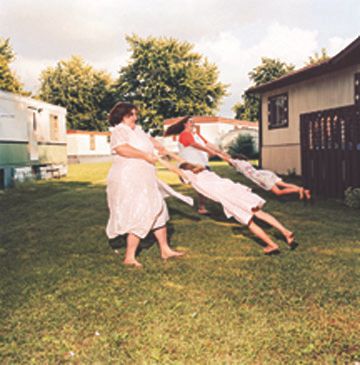
Chris Verene, My Cousin's Husband's Brother's
Cousin's Cousin, 2002, c-print, 24 x 20 inches
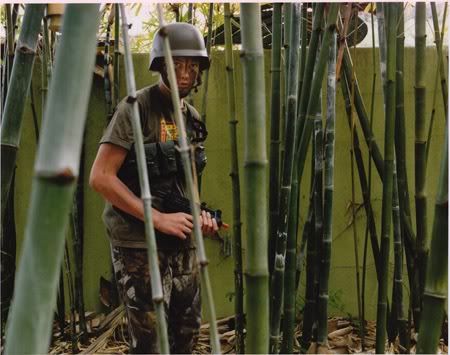
Jona Frank, In Quincy's Yard, Los Angeles 2009, c-print,
11 x 14 inches

Chris Verene, My Cousin's Husband's Brother's
Cousin's Cousin, 2002, c-print, 24 x 20 inches

Jona Frank, In Quincy's Yard, Los Angeles 2009, c-print,
11 x 14 inches
Chris Verene and Jona Frank Spotlighted on Flavorpill
DNJ Gallery's current exhibition featuring the works of both Chris Verene and Jona Frank are currently featured on Flavorpill. To read the full article click the link here, and be sure to stop by the gallery to see the show in person!
Thursday, September 17, 2009
Chris Verene and Jona Frank Opening Photos
Please stop by the gallery to see Family by Chris Verene and Boys: In Progress by Jona Frank. The show will run through November 7, 2009.
View photos from the opening below:
View photos from the opening below:
Wednesday, September 16, 2009
Liz Kuball Photography Blog Features Chris Verene and Jona Frank Exhibition
Please fallow the link to read Liz's review of DNJ Gallery's newest exhibition featuring the works of both Chris Verene and Jona Frank. The show is running now through November 7, 2009, so please drop by for a visit!
Saturday, September 5, 2009
Holly Andres Featured In September Issue of ARTnews
Holly Andres' Sparrow Lane, which showed at DNJ Gallery from December 20, 2008 through February 14, 2009 is currently featured in ARTnews. To read the full article, click the link here.
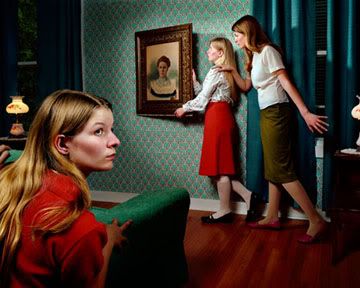
Holly Andres, Behind the Old Painting, 2008,
digital c-print, 40" x 50"

Holly Andres, Behind the Old Painting, 2008,
digital c-print, 40" x 50"
Tuesday, September 1, 2009
Richard Gilles and Jona Frank Are Part of SF Camerawork's Newest Exhibition
SF Camerawork will be including six pieces from Richard Gilles' Almost Home-Less series in their new show, An Autobiography of the Bay Area, part 1: San Francisco Plays Itself. The show opens September 10, and will run through October 31, 2009.
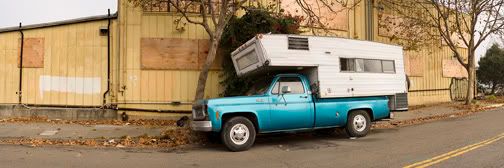
Part one of this two-part exhibition, features work by: John Chiara, Mark Citret, Judy Dater, Kota Ezawa, Alex Fradkin, Jona Frank, Richard Gilles, Jim Goldberg, Katy Grannan, John Harding, Chauncey Hare, Christina Koci Hernandez, Zig Jackson, Michael Jang, Keba Konte, Annie Leibovitz, Ken Light, Ari Marcopoulos, Mary Ellen Mark, Ken Miller, Richard Misrach, Abelardo Morell, Dan Nicoletta, Catherine Opie, Michael Rauner, Alice Shaw, Shi Guorui, Larry Sultan, Sergio De La Torre, Tseng Kwong Chi, and Catherine Wagner.

Part one of this two-part exhibition, features work by: John Chiara, Mark Citret, Judy Dater, Kota Ezawa, Alex Fradkin, Jona Frank, Richard Gilles, Jim Goldberg, Katy Grannan, John Harding, Chauncey Hare, Christina Koci Hernandez, Zig Jackson, Michael Jang, Keba Konte, Annie Leibovitz, Ken Light, Ari Marcopoulos, Mary Ellen Mark, Ken Miller, Richard Misrach, Abelardo Morell, Dan Nicoletta, Catherine Opie, Michael Rauner, Alice Shaw, Shi Guorui, Larry Sultan, Sergio De La Torre, Tseng Kwong Chi, and Catherine Wagner.
Saturday, August 29, 2009
Jonathan Gitelson Showing at The Kirkland Arts Center
DNJ Gallery artist, Jonathan Gitelson, just completed a new piece entitled, Out Of This World which is based off of a Brady Bunch episode by the same title in which Greg Brady creates the illusion of a U.F.O. in order to fool his two brothers. This summer Jonathan attempted to replicate Greg Brady's U.F.O. and has documented his efforts in both poster form and in video.
Both of these pieces will be exhibited at the Kirkland Arts Center in Seattle from September 11 through October 3rd, and the opening reception is Thursday, September 10, 2009.

Both of these pieces will be exhibited at the Kirkland Arts Center in Seattle from September 11 through October 3rd, and the opening reception is Thursday, September 10, 2009.

Chris Verene's band to Headline A Show In Pasadena Tonight
Saturday, August 29th at The Levitt Pavillion in Pasadena Memorial Park 8pm
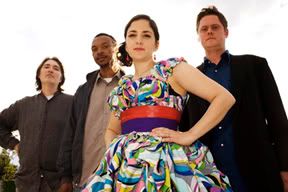
Chris Verene's band, Cordero, headlines a show at the amazing Levitt Shell.Fronted in Spanish and English by Chris Verene's wife, Ani Cordero, Cordero plays a great mix of dance music and serious alternative Latin Rock. They were recently featured in a rave review on National Public Radio's Fresh Air.
Levitt Pavillion
Pasadena, CA
Pasadena Memorial Park
91103
Free, All Ages
Come lounge on the grass & enjoy a free CORDERO show.
www.levittpavilionpasadena.org
HEAR CORDERO at: www.myspace.com/corderonyc

Chris Verene's band, Cordero, headlines a show at the amazing Levitt Shell.Fronted in Spanish and English by Chris Verene's wife, Ani Cordero, Cordero plays a great mix of dance music and serious alternative Latin Rock. They were recently featured in a rave review on National Public Radio's Fresh Air.
Levitt Pavillion
Pasadena, CA
Pasadena Memorial Park
91103
Free, All Ages
Come lounge on the grass & enjoy a free CORDERO show.
www.levittpavilionpasadena.org
HEAR CORDERO at: www.myspace.com/corderonyc
Friday, August 28, 2009
Chris Verene and Jona Frank Artist Reception and the Miracle Mile Art Walk With Artist Talk by Chris Verene
DNJ Gallery is pleased to announce its upcoming exhibition, Family featuring the photographs of artist Chris Verene. Gallery II features the work of Los Angeles based artist, Jona Frank in the show entitled Boys: In Progress. This exhibition runs from September 5 - November 7, 2009, and the opening reception will be held on Saturday September 12 from 4:30-8pm.
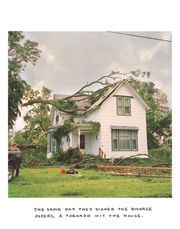
In addition, be sure to join us for the Miracle Mile Art Walk also being held on September 12 from 4:30-9pm! Artist Chris Verene will be giving an artist talk at 4:30 pm here at DNJ Gallery, so don't miss out! Be sure to join the after party being held at The Loft at Liz above Liz's Antique Hardware from 8:30-10:30 pm. For more information on participating galleries and events, please go to the Mid City West link found here.

In addition, be sure to join us for the Miracle Mile Art Walk also being held on September 12 from 4:30-9pm! Artist Chris Verene will be giving an artist talk at 4:30 pm here at DNJ Gallery, so don't miss out! Be sure to join the after party being held at The Loft at Liz above Liz's Antique Hardware from 8:30-10:30 pm. For more information on participating galleries and events, please go to the Mid City West link found here.
Saturday, August 1, 2009
New Summer Hours
Starting August 4 - August 29, 2009, DNJ Gallery will have new hours:
Tuesday - Friday 11 - 6
Saturday 12 - 6
If you have any questions, please fill free to call or stop by the gallery and have a wonderful Summer!
Tuesday - Friday 11 - 6
Saturday 12 - 6
If you have any questions, please fill free to call or stop by the gallery and have a wonderful Summer!
Friday, July 31, 2009
Laura Parker Honored With Pasadena's Individual Artist Grant
After receiving top scores, Laura Parker was awarded the Individual Artist Grant and $4000 from the city of Pasadena as part of their 2009 - 2010 Annual Grants Program. The award money will go will towards a solo show which will include photographs in filmic-sequence and new animations by Laura Parker, and will be shown at Pasadena's Armory Center for the Arts to be scheduled in 2010.
Laura Parker's exhibition, From the Range: pot bottoms and Naked Eye Objects, was shown at DNJ Gallery from September 13 - October 25, 2008. For more information about Laura Parker, please visit our web site or stop by the gallery!
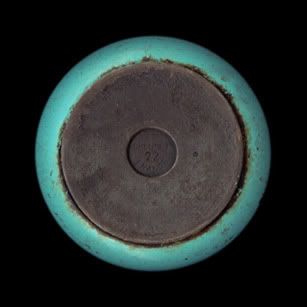
Laura Parker, Naked Eye Objects (Aqua),
digital c-print, 26 x 26 inches
Laura Parker's exhibition, From the Range: pot bottoms and Naked Eye Objects, was shown at DNJ Gallery from September 13 - October 25, 2008. For more information about Laura Parker, please visit our web site or stop by the gallery!

Laura Parker, Naked Eye Objects (Aqua),
digital c-print, 26 x 26 inches
Tuesday, July 21, 2009
Jane O'Neal Featured in WHITEHOT Magazine
July's issue of WHITEHOT Magazine features a review of Jane O'Neal's Environmental Memory: Part - I Home Grown, which was on display at DNJ Gallery from April 25 - June 20, 2009. For more information about Jane's work, please contact the gallery.
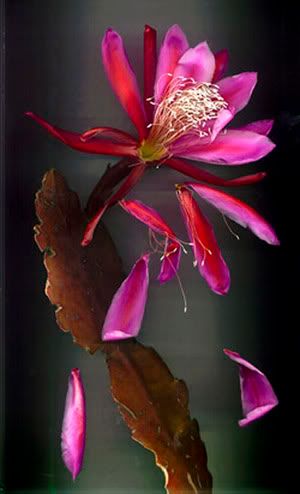
Jane O'Neal, Orchid Cactus Flower #3,
2009, archival inkjet print, 44" x 30"
by: Shana Nys Dambrot
Jane O’Neal acquits her flatbed scanned portraits of flora and root systems with whiffs of the semi-clinical, sexualized near-abstractions of Edward Weston—an obvious comparison if for no other reason than subject matter. Due to advances in technology, the feats of the flatbed scanner, and her eye for fleshy, saturated palettes, her images are undeniably literal and escape all sentimentalism. There remains a bit of a lepidopterological feeling due to the march across the wall of mostly same-size/scaled, identically-framed specimens. There is also a definite anthropomorphism to her images of roots, flowers, and vegetables, which is hardly a scarcity in art’s big book of thematic tactics, yet never gets old. In this thread are the gnarled root-fingers of Root Ball (44 x 30 inches), and the clitoral character of Blue Java Bud (44 x 30 inches) with its cauterized umbilical stem nub and enfolding husks like a carved wooden mask or tribal talisman. But many aren’t about people at all. In Orchid Cactus Flower #1 (44 x 30 inches), the waxy texture of the leaf, like star fruit, is inviting rather than threatening. It has a bit of magic to its luminosity that seems to radiate from within, its translucent flesh refracting light like glazed pigment might in a painting. The flushed and ruddy, royal purple parchment skin and dynamic fling of glistening, intense spring green on Red Onion (44 x 30 inches) is impossibly gorgeous and hasn’t a thing to do with the human body. The approach to color and texture here is a painterly one, while the detail, the sheer amount of mass and surface, that it is possible to achieve in digital photography both supports and supplants that element of her style.
O’Neal’s subjects (aside from the fact that her real subject is photography itself,) in any case her “sitters” or pretexts are, so to speak, natural models, photogenic at every instant and from any angle. But eerily, it is also clear that nothing on display is still alive. It’s all been plucked, pulled from the earth, harvested in some way; it may be ripe and even edible, but it is all already dead and dying. That’s where some of the most humanity in the work reveals itself—not on the explicitly formal level of a Weston, but on the spiritual, existential level of an organic life. Orchid Cactus Flower #3 (44 x 30 inches) is the only picture that captures movement—there are petals photographed mid-fall; very sexy hot pink petals, seductive and alluring, on their way to hitting the ground with a dramatic flair, the up-arching stalk and face/center of the bloom straining toward the “sky” with poignancy; the humanoid stance to its bodily form and pose hinting at consciousness. This image is Romantic almost to the point of the tragic, chronicling the closest activity these inanimates can claim to a narrative arc. The diptych Cavendish Floral Bud and Cavendish Floral Stalk (2008, 44 x 30 inches each) adds the fraught energy of relationships to this equation with its male-female pairing. A richly detailed, multi-faceted bronze, muscular husk with its disheveled mop of curly “hair” and sweet cap of green stalks rests on one side, and a more feminine form of the same species, its dusky pink flower still modest but emerging from under the protective chastity of the husk rests on the other. They are separate but eternally linked, like sides of a coin, or the gender divide they represent as metaphor and metonymy—and there is more material for sexual projection in them as any Rorschach test-giver could dream of. But then again, people seem to love to see themselves in pictures.

Jane O'Neal, Orchid Cactus Flower #3,
2009, archival inkjet print, 44" x 30"
by: Shana Nys Dambrot
Jane O’Neal acquits her flatbed scanned portraits of flora and root systems with whiffs of the semi-clinical, sexualized near-abstractions of Edward Weston—an obvious comparison if for no other reason than subject matter. Due to advances in technology, the feats of the flatbed scanner, and her eye for fleshy, saturated palettes, her images are undeniably literal and escape all sentimentalism. There remains a bit of a lepidopterological feeling due to the march across the wall of mostly same-size/scaled, identically-framed specimens. There is also a definite anthropomorphism to her images of roots, flowers, and vegetables, which is hardly a scarcity in art’s big book of thematic tactics, yet never gets old. In this thread are the gnarled root-fingers of Root Ball (44 x 30 inches), and the clitoral character of Blue Java Bud (44 x 30 inches) with its cauterized umbilical stem nub and enfolding husks like a carved wooden mask or tribal talisman. But many aren’t about people at all. In Orchid Cactus Flower #1 (44 x 30 inches), the waxy texture of the leaf, like star fruit, is inviting rather than threatening. It has a bit of magic to its luminosity that seems to radiate from within, its translucent flesh refracting light like glazed pigment might in a painting. The flushed and ruddy, royal purple parchment skin and dynamic fling of glistening, intense spring green on Red Onion (44 x 30 inches) is impossibly gorgeous and hasn’t a thing to do with the human body. The approach to color and texture here is a painterly one, while the detail, the sheer amount of mass and surface, that it is possible to achieve in digital photography both supports and supplants that element of her style.
O’Neal’s subjects (aside from the fact that her real subject is photography itself,) in any case her “sitters” or pretexts are, so to speak, natural models, photogenic at every instant and from any angle. But eerily, it is also clear that nothing on display is still alive. It’s all been plucked, pulled from the earth, harvested in some way; it may be ripe and even edible, but it is all already dead and dying. That’s where some of the most humanity in the work reveals itself—not on the explicitly formal level of a Weston, but on the spiritual, existential level of an organic life. Orchid Cactus Flower #3 (44 x 30 inches) is the only picture that captures movement—there are petals photographed mid-fall; very sexy hot pink petals, seductive and alluring, on their way to hitting the ground with a dramatic flair, the up-arching stalk and face/center of the bloom straining toward the “sky” with poignancy; the humanoid stance to its bodily form and pose hinting at consciousness. This image is Romantic almost to the point of the tragic, chronicling the closest activity these inanimates can claim to a narrative arc. The diptych Cavendish Floral Bud and Cavendish Floral Stalk (2008, 44 x 30 inches each) adds the fraught energy of relationships to this equation with its male-female pairing. A richly detailed, multi-faceted bronze, muscular husk with its disheveled mop of curly “hair” and sweet cap of green stalks rests on one side, and a more feminine form of the same species, its dusky pink flower still modest but emerging from under the protective chastity of the husk rests on the other. They are separate but eternally linked, like sides of a coin, or the gender divide they represent as metaphor and metonymy—and there is more material for sexual projection in them as any Rorschach test-giver could dream of. But then again, people seem to love to see themselves in pictures.
Saturday, July 18, 2009
Jona Frank's Upcoming Exhibition and Book Review in THE Magazine
This September, DNJ Gallery will be showing images from Jona Frank's new series "Boys." A selection of images from this exhibition are on the DNJ website.

Frank's monograph Right: Portraits from the Evangelical Ivy League,
published by Chronicle Books in 2008, was recently reviewed by THE Magazine.
The book and series documents a group of students from Patrick Henry
College, known as "Harvard for Homeschoolers" which was created for young right-wing Evangelical Christians. As reviewer Julia Schlosser says about the book:
"Her insightful views allow the students to articulate their religious
values and aspirations, broadening our view of their lives."
To read the full review, click here for a downloadable version. If you are interested in purchasing a copy of this book, please contact the gallery.

Frank's monograph Right: Portraits from the Evangelical Ivy League,
published by Chronicle Books in 2008, was recently reviewed by THE Magazine.
The book and series documents a group of students from Patrick Henry
College, known as "Harvard for Homeschoolers" which was created for young right-wing Evangelical Christians. As reviewer Julia Schlosser says about the book:
"Her insightful views allow the students to articulate their religious
values and aspirations, broadening our view of their lives."
To read the full review, click here for a downloadable version. If you are interested in purchasing a copy of this book, please contact the gallery.
Friday, July 10, 2009
Jane O'Neal: Environmental Memory: Part - I Home Grown Reviewed in art ltd. Magazine
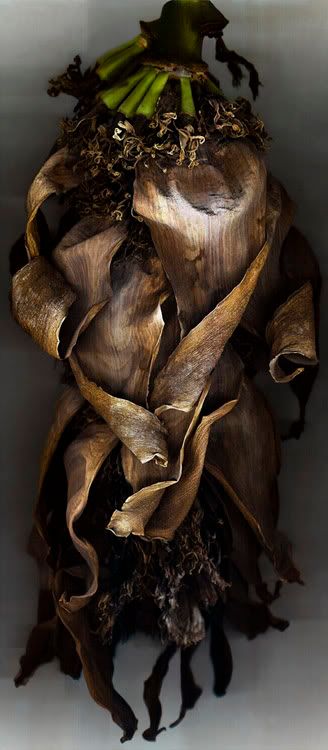
Art ltd. Magazine features Jane O'Neal's Cavendish Floral Stalk in Marlena Doktorczyk's review of Environmental Memory: Part I - Home Grown, which was shown at DNJ Gallery from April 25 - June 20, 2009.
by marlena doktorczyk-donohue
my brain harvests - then constructs - fabrications - of irony - delight - fear and dread – Excerpt, Jane O’Neal, artist’s statement
To analogize Jane O’Neal’s recent incursion into backyard fauna to Georgia O’Keeffe’s distantly similar content seems to completely miss the point; namely, the fresh technical aspects and innovations that make this work unique in a sea of still-lifes and a decade of digitally-based photo images. We know Jane O’Neal for her naturally lit, night cibachromes capturing people-less motel facades, abandoned shopping carts, and backyard swimming pools in the incandescent high pitched hues of backlit neon. What made these stunning—besides O’Neal’s impeccably eccentric eye and dead-on technical instincts—was that the absent humanity was like a breath over the scenes, always suggesting a human presence.
In her new work, O’Neal presses backyard plants—onions, bananas, flowering cacti—onto her scanner then makes nuanced, calibrated ink jet prints on archival paper. Although once again we humans, bursting with what Deleuze called all our “overwhelming versatility of desire” are absent, our generic need and our irreversible decay is suggested in absentia via things related to us: a turgid, red-orange persimmon caught both from the stem-top and in profile such that tiny dots of over-ripening suggest living flesh, or a mature star cluster about to birth a few more universes. Because the scanner renders such unusual and unpredictable relationships of depth/light, because the digital medium provides for an array of intense, tinsel-y saturated color, and because O’Neal is so skilled at what is left in, removed or exaggerated, each work looks like an enlarged page from those medieval hand-drawn botanicals, either created or viewed on really mellow acid. Due to the light of the scanner and the artist’s skill, many images get this sort of Kirlian aura around them, reminding us of studies that purported to “photograph” the life force around plants. Others are crisp with a radioactive luminosity and 3-D sheen, calling to mind gardens propagating out of control and glowing oddly after a nuclear catastrophe. The works swing from the intensely erotic to the sadly senescent; they speak indirectly to the complex relationship between lived life and dues ex machina, and they point to the heart of what is human though no humans are spied.
For a printable version of this review click here!
Tuesday, July 7, 2009
20% off DNJ Gallery Inventory Through July 31, 2009
Please stop by, or search our web site for DNJ Gallery artists. There is something for everyone, so please take advantage of this wonderful opportunity to expand, or start ones photography collection today. If you have any questions, feel free to contact the gallery via email at office@dnjgallery.net or by phone at 323-931-1311.
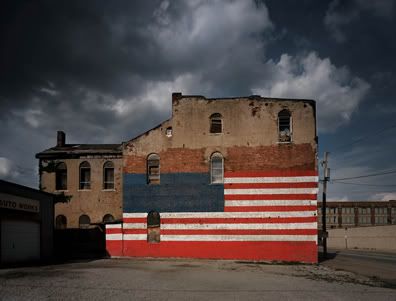



Friday, July 3, 2009
Tuesday, June 30, 2009
Gregori Maiofis Print Sold at Phillips London Auction
On June 29th, Gregori Maiofis' print, "A Diagram for Teaching an Alternative Theory of Evolution, 2007" sold at Phillips de Pury and Company's London auction for $10,525.
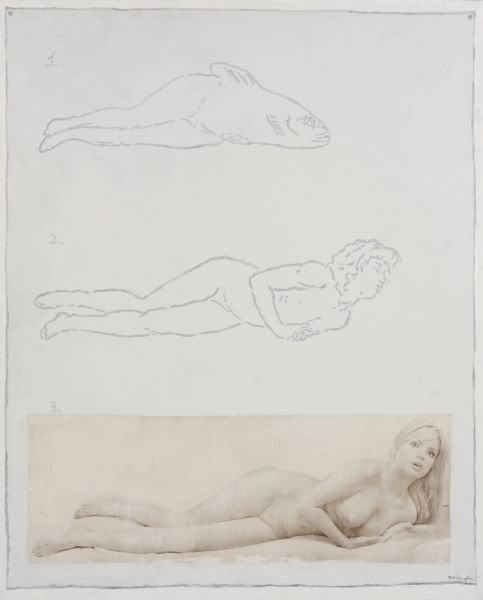
Gregori Maiofis, A Diagram for Teaching an Alternative Theory of Evolution, 2007, bromoil and acrylic on canvas, 59 x 49 1/4 inches
Currently on display at DNJ Gallery is Gregori's exhibition entitled Proverbs showing now through August 29, 2009.

Gregori Maiofis, A Taste for Russian Ballet, 2008, unique bromoil, 29 x 26 inches

Gregori Maiofis, A Diagram for Teaching an Alternative Theory of Evolution, 2007, bromoil and acrylic on canvas, 59 x 49 1/4 inches
Currently on display at DNJ Gallery is Gregori's exhibition entitled Proverbs showing now through August 29, 2009.

Gregori Maiofis, A Taste for Russian Ballet, 2008, unique bromoil, 29 x 26 inches
Re-figurative Ordering and Gregori Maiofis Opening Photos
Please stop by the gallery to see our group show entitled, Re-figurative Ordering, guest curated by Kaucyila Brooke, and Proverbs by Gregori Maiofis in gallery II. The show will run through August 29, 2009.
View photos from the opening below:
View photos from the opening below:
Saturday, June 27, 2009
Re-figurative Ordering and Gregori Maiofis: Artist Reception Saturday June 27, 2009 from 6 - 8pm
DNJ Gallery is pleased to announce its current exhibition, Re-figurative Ordering guest curated by Kaucyila Brooke, which features the works of several local artists, as well as artists from abroad. Gallery II features the work of Gregori Maiofis, in the show entitled Proverbs. Both exhibitions run from June 27 through August 29, 2009.
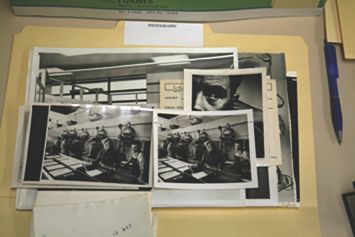
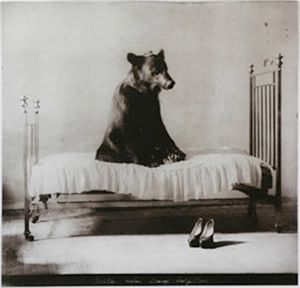


Saturday, June 13, 2009
The Mid-City West Art Walk and Artist Talk with Anne Veraldi
Please join DNJ Gallery and artist Anne Veraldi, from 5 - 9pm Saturday, June 20 for the Mid-City West Art Walk.

Anne Veraldi, Filament#3, 2006, 20x30 inches, digital c-print
DNJ will be hosting the event, and food will be catered by Sante La Brea. Artist Anne Veraldi will also be here to give a talk of her work at 5:30pm. Over 40 galleries in the Wilshire, La Brea, and Beverly Blvd area open their doors for this event. To download a map of the galleries, please visit the MCW website, and be sure to join the after party hosted by LDC Design Studio, locted at 450 South La Brea Avenue, for art, music, food, and drinks starting at 8pm!

Anne Veraldi, Filament#3, 2006, 20x30 inches, digital c-print
DNJ will be hosting the event, and food will be catered by Sante La Brea. Artist Anne Veraldi will also be here to give a talk of her work at 5:30pm. Over 40 galleries in the Wilshire, La Brea, and Beverly Blvd area open their doors for this event. To download a map of the galleries, please visit the MCW website, and be sure to join the after party hosted by LDC Design Studio, locted at 450 South La Brea Avenue, for art, music, food, and drinks starting at 8pm!
Tuesday, June 2, 2009
One of Art Scene's Continuing and Recommended Exhibitions: Jane O'Neal's Environmental Memory: Part I - Home Grown
DNJ's current exhibition, featuring the work of Jane O'Neal, is featured in the June issue of Art Scene. This show is only open for three more weeks. Please stop by!
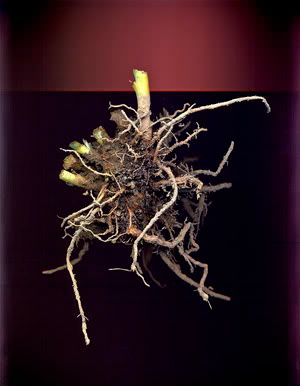
Root Ball, 2008, archival ink jet print, 44 x 34 inches
A. Moret
Rather than photograph plant life thriving and decaying in situ, Jane O’Neal brings a flatbed scanner to her backyard and scans birds of paradise, persimmons, and gnarled root balls. In her manipulation, handling, and recording of delicate objects O’Neal transforms natural elements into computer-generated objects. Therefore the prints in “Environmental Memory: Part 1--Home Grown” depict subjects that no longer exist. Instead O’Neal’s digital c-prints become the memory of her former home grown environment. Whether it’s “Apple Cactus,” depicting a rotted and blackened apple (a symbol of longevity and endurance), or “Persimmion #1,” in which O’Neal has granted us access inside the dying petals, “Environmental Memory” is a show about transition. “Root Ball” is an unearthed web of roots that appear to continue growing with ferocity even though they have been removed from the soil. The root is drenched in contrast--as it is still stained by the dirt and overexposed by the glare of the scanner. By uprooting the root ball, O’Neal demonstrates that “we’re all in transition,” and confirms that we are never living in a single environment but moving from one to the next (DNJ Gallery, West Hollywood).

Root Ball, 2008, archival ink jet print, 44 x 34 inches
A. Moret
Rather than photograph plant life thriving and decaying in situ, Jane O’Neal brings a flatbed scanner to her backyard and scans birds of paradise, persimmons, and gnarled root balls. In her manipulation, handling, and recording of delicate objects O’Neal transforms natural elements into computer-generated objects. Therefore the prints in “Environmental Memory: Part 1--Home Grown” depict subjects that no longer exist. Instead O’Neal’s digital c-prints become the memory of her former home grown environment. Whether it’s “Apple Cactus,” depicting a rotted and blackened apple (a symbol of longevity and endurance), or “Persimmion #1,” in which O’Neal has granted us access inside the dying petals, “Environmental Memory” is a show about transition. “Root Ball” is an unearthed web of roots that appear to continue growing with ferocity even though they have been removed from the soil. The root is drenched in contrast--as it is still stained by the dirt and overexposed by the glare of the scanner. By uprooting the root ball, O’Neal demonstrates that “we’re all in transition,” and confirms that we are never living in a single environment but moving from one to the next (DNJ Gallery, West Hollywood).
Subscribe to:
Comments (Atom)


